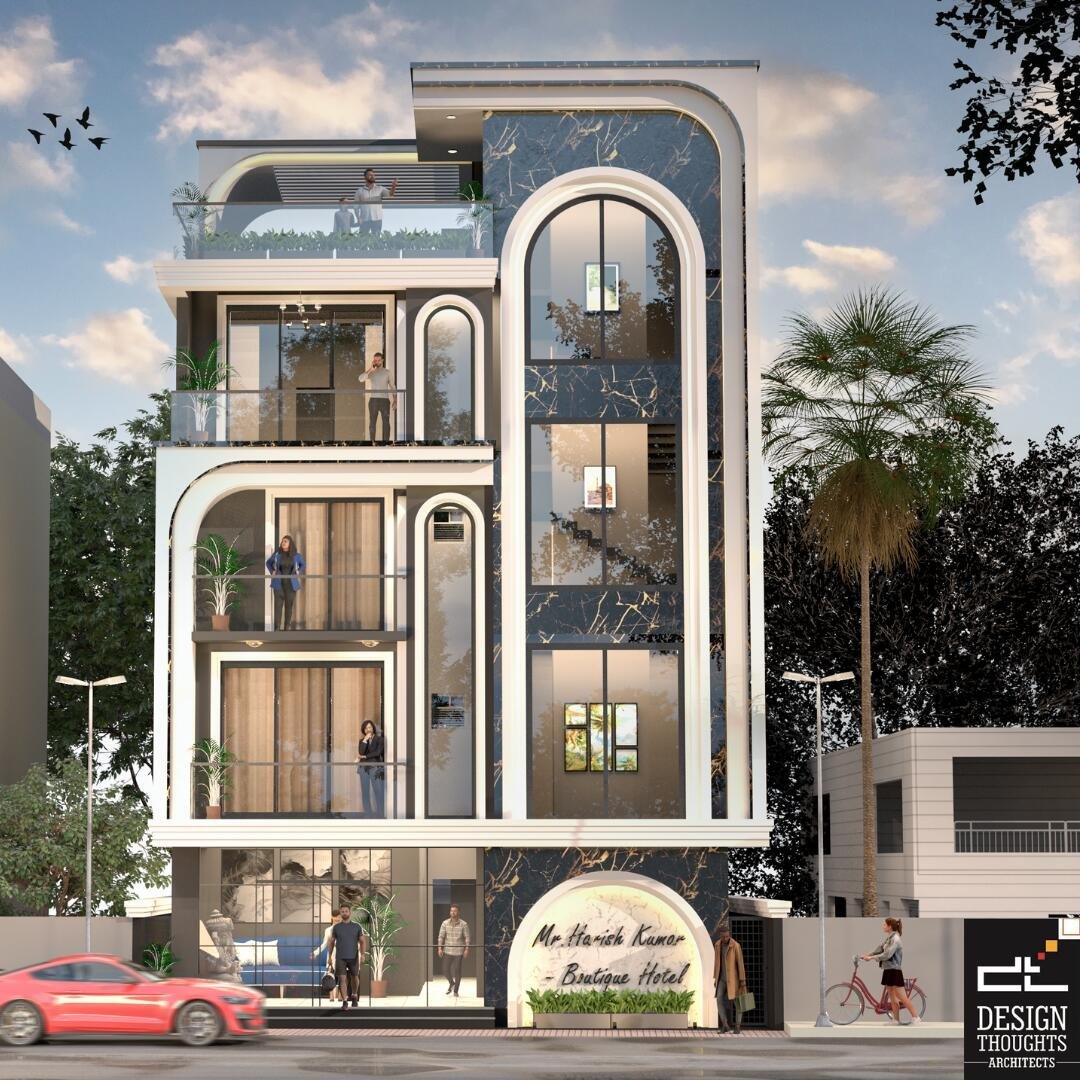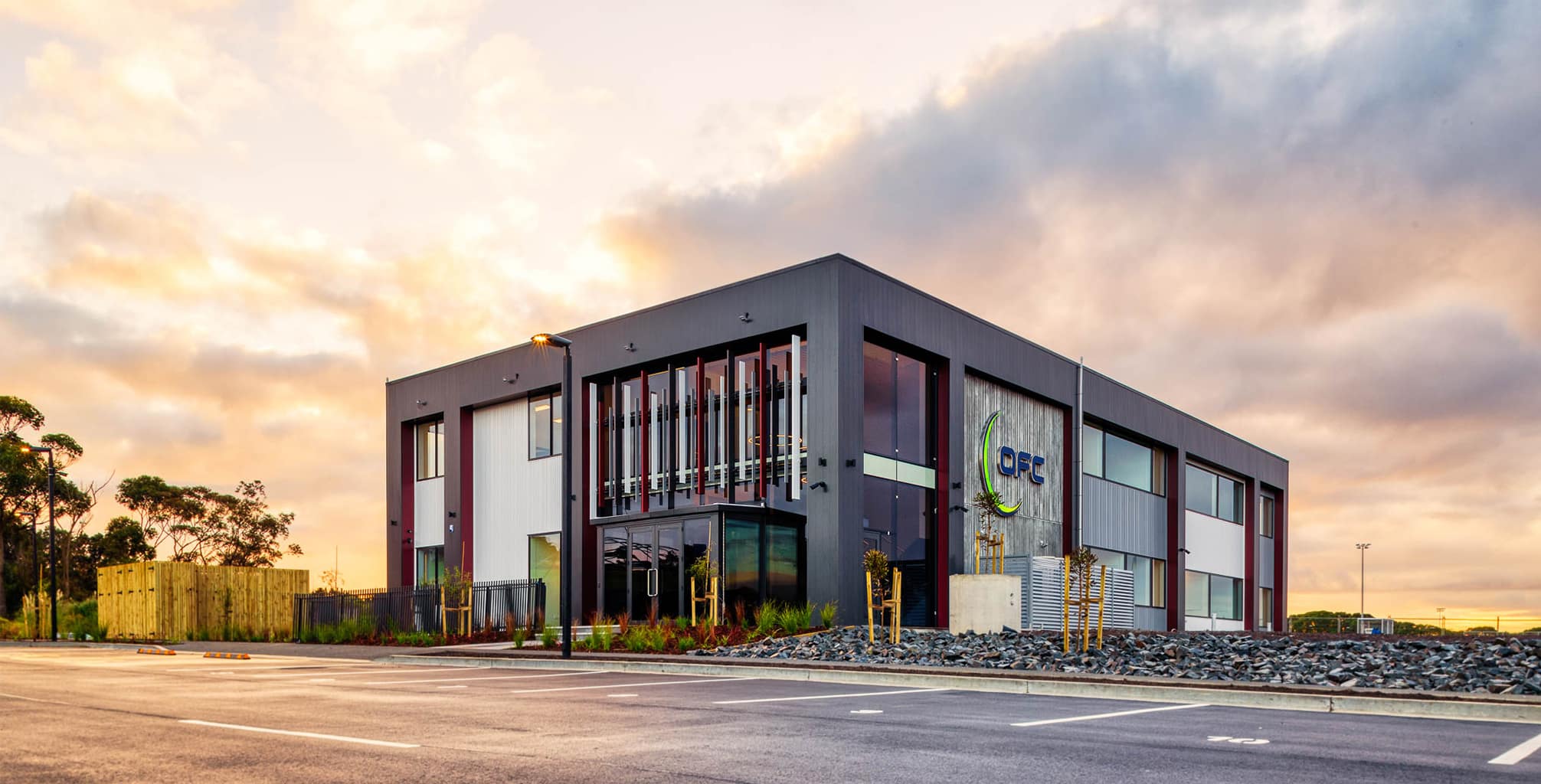Revealing the Comprehensive Solutions Given by Commercial Architects for Modern Dope
Commercial Architects offer a vital feature in modern growth projects. They blend design visual appeals with performance while sticking to regulatory needs. Their know-how prolongs past simple construction, integrating sustainable techniques and cutting-edge technologies. As they navigate complicated zoning legislations, Architects team up with various stakeholders to bring visions to life. This diverse technique questions concerning the advancing role of Architects in forming modern rooms and the impact of their deal with future developments.
Understanding the Function of Commercial Architects in Modern Advancement
In contemporary city landscapes, Commercial Architects play an essential role fit useful and visual spaces that meet diverse business demands. Their experience expands past mere layout; they browse complicated zoning regulations, constructing codes, and environmental guidelines. By teaming up with clients, they recognize certain requirements, ensuring that each task aligns with the customer's vision while likewise considering practical elements such as sustainability and cost-effectiveness. Commercial Architects are adept at integrating ingenious technologies and materials into their layouts, boosting both the capability and energy effectiveness of buildings. They perform detailed website analyses to analyze the potential challenges and opportunities provided by a place. In addition, effective interaction with contractors and other stakeholders is crucial, making certain that the task progresses smoothly from conception to conclusion. Inevitably, Commercial Architects contribute in developing spaces that not just accomplish useful functions however additionally add to the general character and vibrancy of metropolitan environments.
Principle Layout: Changing Ideas Into Reality
Principle layout works as a necessary stage in Commercial style, where ingenious design options emerge from innovative thinking. This process depends on collective ideation, bringing together varied perspectives to refine and enhance preliminary principles. As ideas materialize, they change from abstract notions right into concrete building facts.
Cutting-edge Design Solutions
Changing concepts right into truth is the trademark of ingenious layout solutions in Commercial architecture. These options blend imagination with capability, attending to the one-of-a-kind requirements of contemporary growths. By leveraging sophisticated technologies and sustainable methods, Architects craft areas that are not just visually enticing yet additionally effective and adaptable. Emphasis on customer experience drives the design procedure, making certain that settings foster efficiency and partnership. Each task take advantage of a tailored technique, where principles are carefully established to reflect the customer's vision while thinking about future trends. Ingenious style options likewise prioritize flexibility, enabling for adjustments gradually as organization requirements evolve. Ultimately, these strategies boost the total worth of Commercial spaces, making them pivotal in today's affordable landscape.

Collaborative Ideation Process
Partnership works as the foundation of the ideation procedure in Commercial design, promoting imagination and advancement amongst varied stakeholders. Architects, clients, engineers, and area participants take part in dynamic conversations, making certain that all point of views are considered. This comprehensive technique permits the expedition of numerous design concepts, encouraging unique options that line up with the task's vision. Through workshops and conceptualizing sessions, ideas advance and fine-tune, transforming initial principles into tangible styles. Modern technology also plays an essential role, with devices such as Building Info Modeling (BIM) promoting real-time cooperation and modifications. Inevitably, this joint ideation process not just improves the style outcome but likewise grows a feeling of ownership and financial investment amongst all celebrations included, resulting in effective Commercial advancements.
Zoning Analysis: Browsing Rules and Conformity
As developers commence on brand-new projects, recognizing zoning regulations is important to guaranteeing compliance and preventing expensive delays. Zoning analysis plays an essential role in this procedure, as it involves evaluating neighborhood zoning laws that dictate land usage, building height, thickness, and setbacks. Commercial Architects have the knowledge to navigate these complex laws, helping customers recognize allowable uses and any needed differences.
Sustainable Style Practices: Structure for the Future
Sustainable layout techniques are increasingly crucial in the domain name of Commercial style, particularly as environmental worries continue to rise. Architects prioritize environment-friendly products, energy-efficient systems, and design approaches that reduce waste and ecological influence. Integrating eco-friendly power sources, such as photovoltaic panels and wind turbines, permits buildings to create their very own power and minimize dependence on fossil fuels.Furthermore, sustainable style highlights the significance of interior environmental top quality. This consists of utilizing all-natural light, improving air flow, and selecting non-toxic products to enhance resident health and productivity. Eco-friendly roof coverings and living wall surfaces are also popular attributes that contribute to biodiversity and urban cooling.Additionally, Commercial Architects typically incorporate water conservation strategies, like rainwater harvesting and drought-resistant landscape design. Via these innovative techniques, they create areas that not only satisfy modern requirements however likewise promote a lasting future, attending to the growing demand for click to investigate responsible growth in the modern-day globe.
Project Administration: Ensuring Timely and Reliable Execution
Effective project management is vital for guaranteeing that Commercial style jobs are finished promptly and within spending plan. This role incorporates an array of responsibilities, consisting of the sychronisation of various stakeholders, timelines, and sources. Commercial Architects utilize their knowledge to create helpful hints comprehensive job strategies that outline important turning points and deliverables, enabling systematic development tracking.Regular communication among staff member and customers is important, promoting openness and helping with timely decision-making. Threat management strategies are also employed to recognize possible challenges early, enabling positive solutions to be created. By making use of sophisticated job management devices, Architects can monitor job performance in real-time, making changes as needed to maintain effectiveness.
Inside Design: Developing Practical and Visual Rooms
Interior decoration plays an important duty in enhancing both performance and aesthetic appeal within Commercial spaces. Effective space planning can optimize workflow and improve customer experience, while aesthetic style principles add to a visually appealing atmosphere - commercial architects. Together, these components create rooms that are not only functional yet likewise motivating
Area Planning Efficiency
While maximizing the utility of readily available room, Commercial Architects focus on area planning performance to develop both functional and aesthetically pleasing environments. This technique involves careful evaluation of the spatial format to guarantee ideal use of every square foot. Architects think about factors such as workflow, availability, and all-natural light to improve use. By purposefully placing furnishings, devices, and workstations, they facilitate motion and communication among individuals, promoting performance. Furthermore, zoning various areas for particular functions helps in handling sound and personal privacy, creating a harmonious ambience. Through efficient area planning, Commercial Architects can transform restraints right into chances, guaranteeing that each room meets the varied requirements of its passengers while adhering to regulatory needs and market requirements.
Visual Layout Concepts
Visual layout principles play an essential duty fit atmospheres that are not just functional but additionally visually appealing. These principles assist Commercial Architects in developing areas that resonate with individuals while boosting brand name identification. Key elements consist of balance, percentage, and consistency, which collaborate to develop a cohesive appearance. Color design and products are thoroughly chosen to evoke preferred feelings and support the total motif. Furthermore, lights plays a crucial role, influencing state of mind and presence while highlighting building features. By integrating these principles, Architects assure that rooms are not only practical but likewise inviting and inspiring. Inevitably, reliable visual layout cultivates a positive user experience, encouraging engagement and complete satisfaction in Commercial atmospheres.
Collaboration With Stakeholders: Fostering Effective Partnerships
Successful collaborations in Commercial design depend upon efficient partnership see this site with stakeholders, making certain that every voice is listened to and valued. This joint strategy involves appealing different parties, consisting of clients, contractors, and neighborhood members, throughout the design and growth process. By promoting open interaction, Commercial Architects can deal with worries, gather understandings, and line up the project's vision with stakeholder expectations.The integration of diverse point of views boosts creativity and advancement, leading to even more practical and aesthetically pleasing layouts. Routine conferences, feedback sessions, and workshops facilitate this dialogue, permitting Architects to adjust their plans in feedback to stakeholder input. On top of that, developing depend on through openness and liability reinforces these collaborations, causing a smoother job execution.Ultimately, the success of modern advancements depends on the Architects' capability to navigate and integrate differing passions, creating a joint environment that advertises common objectives and common success.
Often Asked Questions
Exactly How Do Commercial Architects Manage Budget Plan Constraints Throughout a Job?

What Sorts of Software Do Commercial Architects Typically Use?
Commercial Architects commonly use software program such as AutoCAD for preparing, Revit for Structure Information Modeling, SketchUp for 3D modeling, and job monitoring devices like Microsoft Project to enhance collaboration and improve operations throughout the style process.
Can Commercial Architects Help With Acquiring Funding for Projects?
Commercial Architects can assist in obtaining financing for jobs by preparing in-depth propositions, helping to express layout visions, and offering economic estimates that can improve the chance of securing needed financing from investors or monetary institutions.
How Do Architects Make Certain Safety Throughout the Building And Construction Refine?
Architects guarantee safety throughout construction by applying extensive design standards, collaborating with designers, conducting regular website examinations, sticking to local regulations, and fostering communication among all stakeholders to mitigate threats and promote a secure workplace.
What Continuous Support Do Architects Supply After Task Completion?
After task conclusion, Architects use continuous support via upkeep appointments, efficiency assessments, and layout adjustments. They guarantee buildings fulfill advancing requirements, address potential concerns, and keep conformity with regulations, promoting a long-lasting partnership with clients.